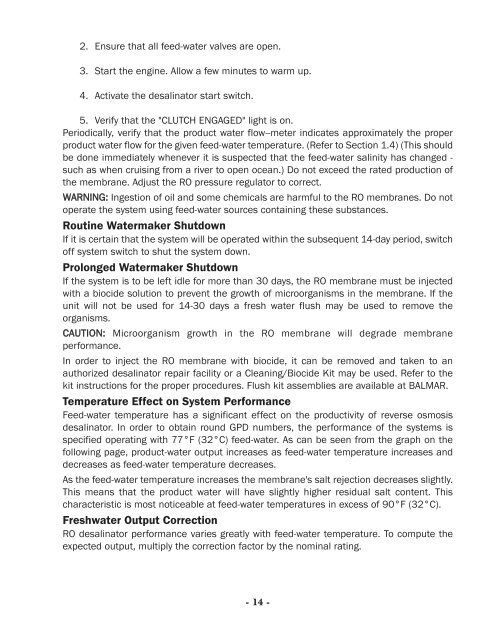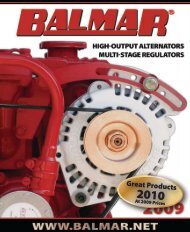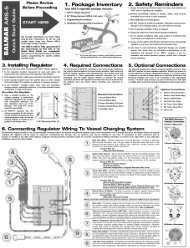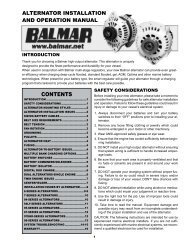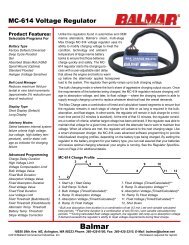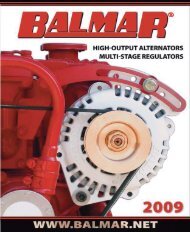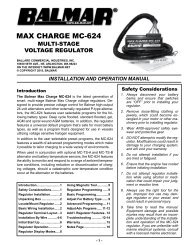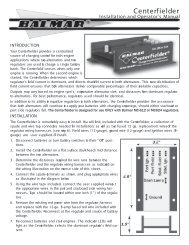Create successful ePaper yourself
Turn your PDF publications into a flip-book with our unique Google optimized e-Paper software.
2. Ensure that all feed-water valves are open.3. Start the engine. Allow a few minutes to warm up.4. Activate the desalinator start switch.5. Verify that the "CLUTCH ENGAGED" light is on.Periodically, verify that the product water flow--meter indicates approximately the properproduct water flow for the given feed-water temperature. (Refer to Section 1.4) (This shouldbe done immediately whenever it is suspected that the feed-water salinity has changed -such as when cruising from a river to open ocean.) Do not exceed the rated production ofthe membrane. Adjust the RO pressure regulator to correct.WARNING: Ingestion of oil and some chemicals are harmful to the RO membranes. Do notoperate the system using feed-water sources containing these substances.Routine <strong>Watermaker</strong> ShutdownIf it is certain that the system will be operated within the subsequent 14-day period, switchoff system switch to shut the system down.Prolonged <strong>Watermaker</strong> ShutdownIf the system is to be left idle for more than 30 days, the RO membrane must be injectedwith a biocide solution to prevent the growth of microorganisms in the membrane. If theunit will not be used for 14-30 days a fresh water flush may be used to remove theorganisms.CAUTION: Microorganism growth in the RO membrane will degrade membraneperformance.In order to inject the RO membrane with biocide, it can be removed and taken to anauthorized desalinator repair facility or a Cleaning/Biocide Kit may be used. Refer to thekit instructions for the proper procedures. Flush kit assemblies are available at BALMAR.Temperature Effect on System PerformanceFeed-water temperature has a significant effect on the productivity of reverse osmosisdesalinator. In order to obtain round GPD numbers, the performance of the systems isspecified operating with 77°F (32°C) feed-water. As can be seen from the graph on thefollowing page, product-water output increases as feed-water temperature increases anddecreases as feed-water temperature decreases.As the feed-water temperature increases the membrane's salt rejection decreases slightly.This means that the product water will have slightly higher residual salt content. Thischaracteristic is most noticeable at feed-water temperatures in excess of 90°F (32°C).Freshwater Output CorrectionRO desalinator performance varies greatly with feed-water temperature. To compute theexpected output, multiply the correction factor by the nominal rating.- 14 -


